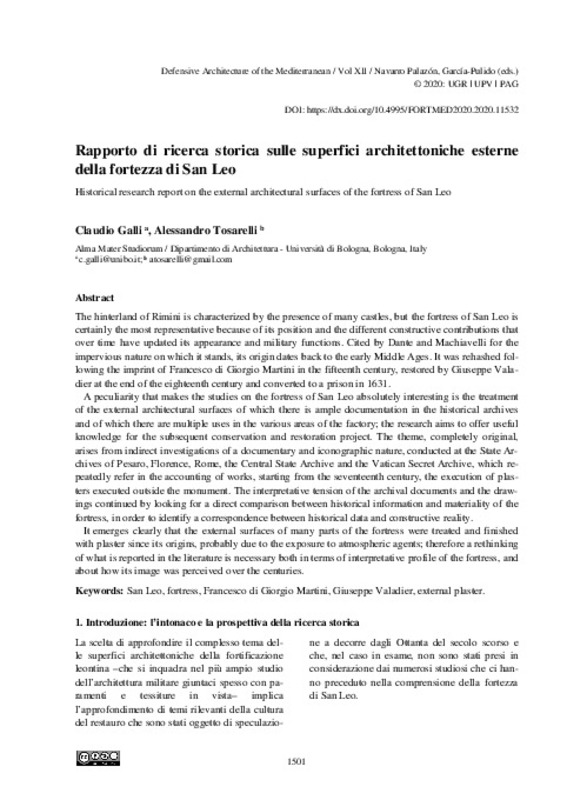JavaScript is disabled for your browser. Some features of this site may not work without it.
Buscar en RiuNet
Listar
Mi cuenta
Estadísticas
Ayuda RiuNet
Admin. UPV
Rapporto di ricerca storica sulle superfici architettoniche esterne della fortezza di San Leo
Mostrar el registro completo del ítem
Galli, C.; Tosarelli, A. (2020). Rapporto di ricerca storica sulle superfici architettoniche esterne della fortezza di San Leo. Editorial Universitat Politècnica de València. 1501-1508. https://doi.org/10.4995/FORTMED2020.2020.11532
Por favor, use este identificador para citar o enlazar este ítem: http://hdl.handle.net/10251/146748
Ficheros en el ítem
Metadatos del ítem
| Título: | Rapporto di ricerca storica sulle superfici architettoniche esterne della fortezza di San Leo | |
| Autor: | Galli, Claudio Tosarelli, Alessandro | |
| Fecha difusión: |
|
|
| Resumen: |
[EN] The hinterland of Rimini is characterized by the presence of many castles, but the fortress of San Leo is
certainly the most representative because of its position and the different constructive contributions that
over ...[+]
|
|
| Palabras clave: |
|
|
| Derechos de uso: | Reconocimiento - No comercial - Sin obra derivada (by-nc-nd) | |
| ISBN: |
|
|
| DOI: |
|
|
| Editorial: |
|
|
| Versión del editor: | http://ocs.editorial.upv.es/index.php/FORTMED/FORTMED2020/paper/view/11532 | |
| Título del congreso: |
|
|
| Lugar del congreso: |
|
|
| Fecha congreso: |
|
|
| Tipo: |
|








